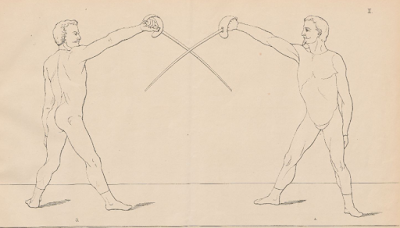Ten years ago a great post appeared at kenshi247 site, entitled Kenjutsu Kyohan. This post contained the English translation of an interesting Japanese source: local military sabre manual from 1909. At that time the Japanese military tried to copy European sabre systems, and established a rather interesting hybrid system: Japanese style protective equipment, shinai as fencing weapon, but many other components were definitely copied from the European sabre sources (mainly French). So I have been deeply disappointed when I saw that the translation and the whole post disappeared from kenshi247 homepage. [1]
Fortunately it is really hard to remove something from the net, once it was uploaded and widely available. So currently this interesting translation can be found at many places.
- Via Way Back Machine.
- Via the BA's thesis (2010) of its translator (Appendix A). [3]
- Via another site.
French (?) foil fencing & Japanese cadets [4]
____________________________________
- Original link. At the moment if we follow that link, only a „Page not found” message welcomes the visitor, without providing any further explanation.
- In November 2010 Matt Easton posted the link to this translation at Schola Gladiatoria's list of online treatises. Currently his site is under major transition from one provider to another, and therefore cannot be used. But a cached version can be seen here.
- Isaac Meyer: The Soul of a Nation: Swordsmanship in Japan’s Modern Period.
- Presumably the last decades of the 19th century.












